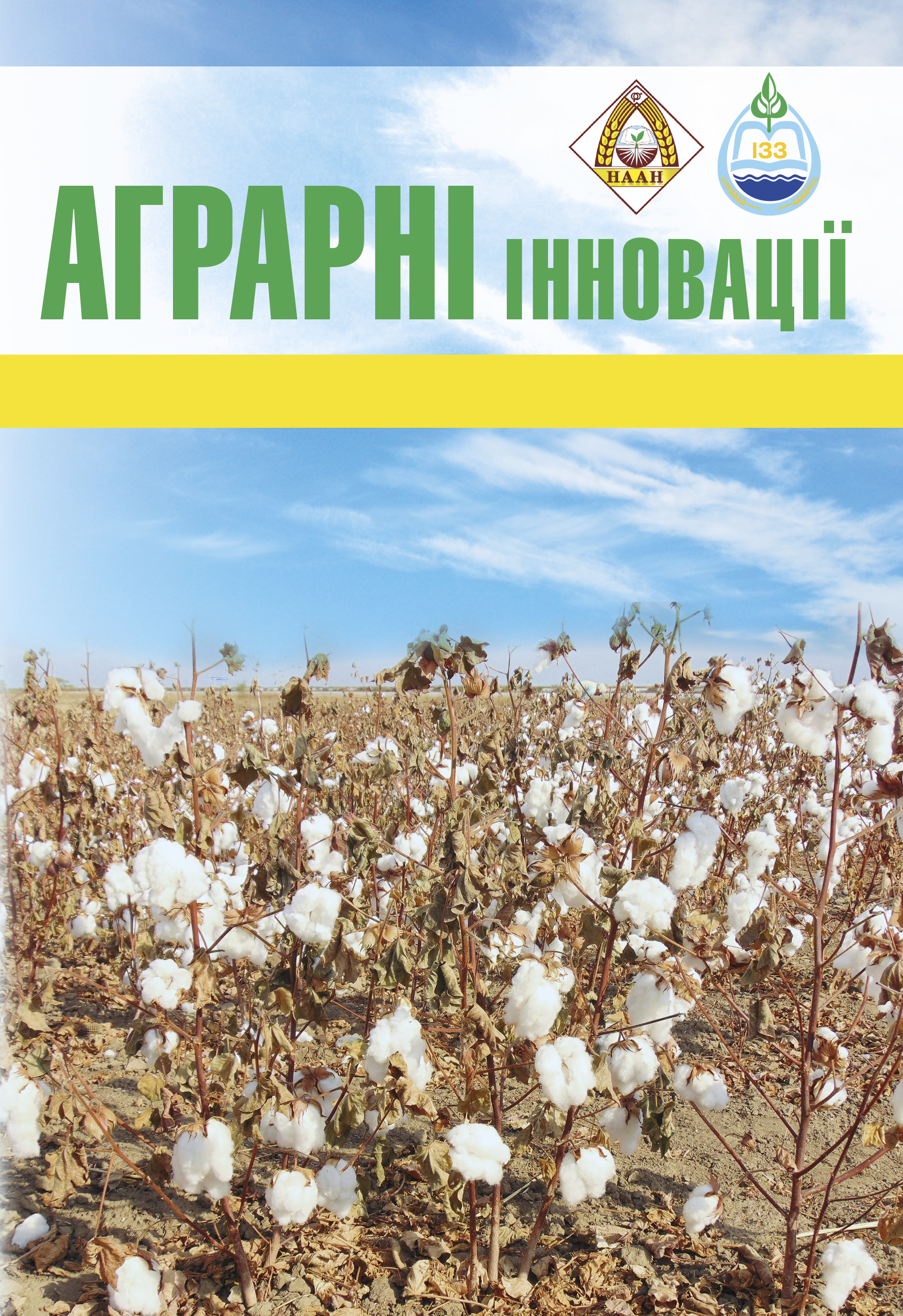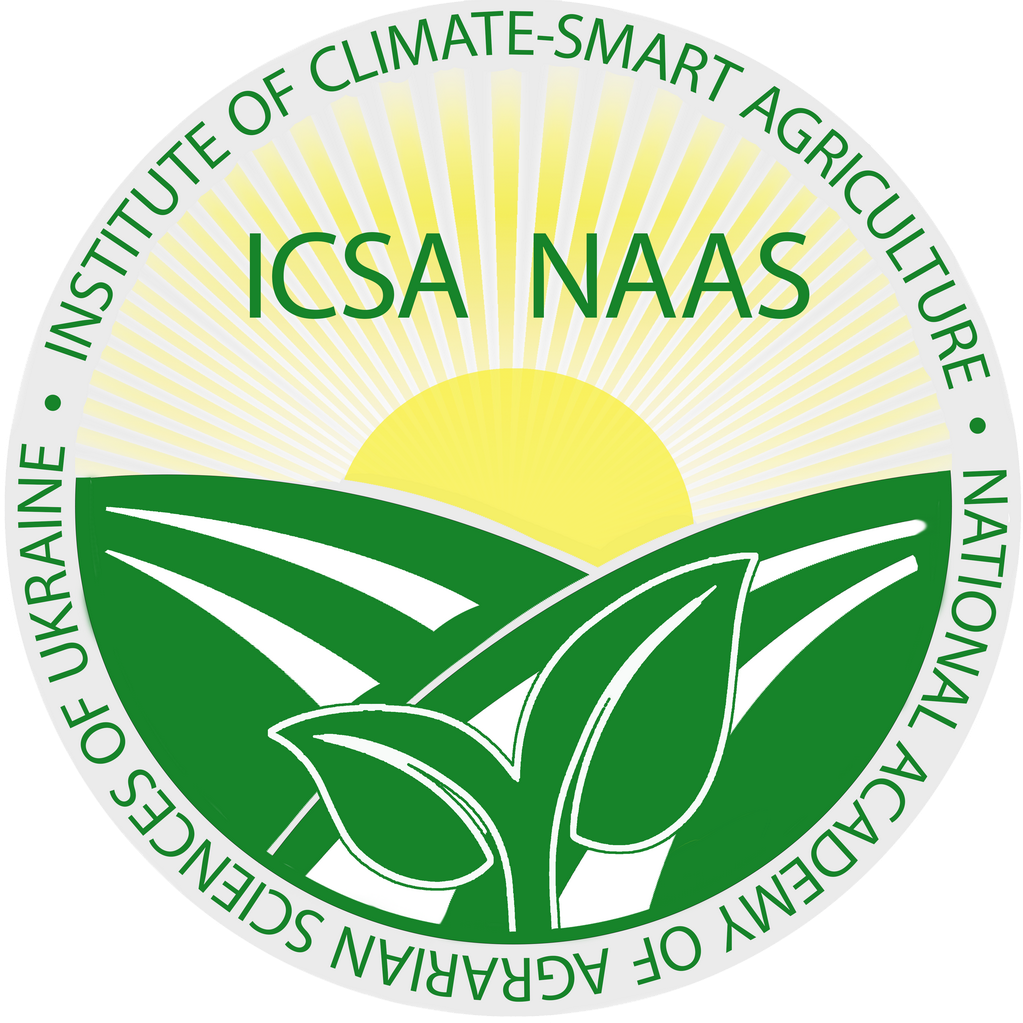Achievements and prospects for the development of heterosis breeding in winter bread wheat
Abstract
Purpose. The article presents current issues in heterosis breeding of winter bread wheat, analyzes the present state of hybrid and parental component implementation in agricultural production, and outlines key scientific and practical prospects for further development of this direction under Ukrainian conditions. Given the growing challenges related to climate change, the need to increase yield and production stability, heterosis breeding is considered a strategically important tool for ensuring food security.Results. It has been established that global achievements in hybrid wheat breeding enable the development of new hybrids with increased productivity potential and resistance to adverse environmental conditions. Particular attention is paid to hybrid seed production schemes based on the use of cytoplasmic male sterility (CMS) or gametocidal (chemical) castration, as well as to the organization of the breeding and seed production process. Achievements and future prospects for heterosis breeding on both fertile and CMS-based systems are presented. It has been revealed that the complexity of hybrid seed production remains a major barrier to the widespread adoption of hybrids.In Ukraine, eight hybrids of winter bread wheat have already been registered in the State Register, confirming their recognized practical value. The necessity of developing domestic hybrids is emphasized, as new wheat hybrids are annually registered on the seed market both in Ukraine and globally.Conclusions. Heterosis breeding of winter bread wheat holds significant potential for increasing the efficiency of grain production in Ukraine. The introduction of hybrids allows for more stable and higher yields under conditions of climate change and production intensification. Further development of this field in Ukraine requires the improvement of parental line selection methods, optimization of hybridization technologies, creation of CMS-based analogs of line-varieties (female components), and fertility restorer lines (male components of hybrids), among other needs.Considering the initial successful examples of hybrid registration in the State Register, a gradual increase in their role in the varietal structure of wheat in Ukraine can be expected.
References
2. Muhleisen, J., Piepho, H. P., Maurer, H. P., Longin, C., Reif, J. Yield stability of hybrids versus lines in wheat, barley, and triticale. Theoretical and Applied Genetics. 2014. Vol. 127. P. 309–316.
3. Kempe, K., Rubtsova, M., Gils, M. Split-gene system for hybrid wheat seed production. Proceedings of the National Academy of Sciences. 2014. Vol. 111. P. 9097–9102.
4. Changping, Z. Research and application of hybrid wheat in China. Engineering Science. 2013. Vol. 11. P. 19–21.
5. Мазур, О. В. Селекція та насінництво польових культур : навч. посіб. Вінниця: ТВОРИ, 2023. 348 с.
6. Рябовол, Я. С., Парій, Ф. М., Рябовол, Л. О., Заболотна, І. Р., Діордієва, І. П. Гібридна пшениця: про- блеми, можливості, переваги, перспективи. Збірник наукових праць Уманського національного університету садівництва. 2014. Вип. 86. С. 210–214.
7. Koemel, J. E., Guenzi, A. C., Carver, B. F. Hybrid and pure line hard winter wheat yield and stability. Crop Science. 2004. Vol. 44. P. 107–113.
8. Aimin, Z., Xiuling, N., Dongchen, L. Advances of hybrid wheat breeding in China. Cereal Research Communications. 2001. Vol. 9. P. 343–350.
9. Whitford, R., Fleury, D., Reif, J., Garcia, M. Hybrid breeding in wheat: Technologies to improve hybrid wheat seed production. Journal of Experimental Botany. 2013. Vol. 64.
10. Adugna, A., Singh, K., Nanda, G. S., Bains, N. S. A comparison of cytoplasmic and chemically-induced male sterility systems for hybrid seed production in wheat (Triticum aestivum). Euphytica. 2004. Vol. 135. P. 297–304.
11. Wurschum, T., Leiser, W. L., Weissmann, S., Maurer, H. P. Genetic architecture of male fertility restoration of Triticum timopheevii cytoplasm and fine-mapping of the major restorer locus Rf3 on chromosome 1B. Theoretical and Applied Genetics. 2017. Vol. 130. P. 1253–1266.
12. Singh, S. P., Srivastava, R., Kumar, J. Male sterility systems in wheat and opportunities for hybrid wheat development. Acta Physiologiae Plantarum. 2015. Vol. 37. P. 1713.
13. Zhou, W., Frederic, L. K., Leslie, L. D., Wang, S. SSR markers associated with fertility restoration genes against Triticum timopheevii cytoplasm in Triticum aestivum. Euphytica. 2005. Vol. 141. P. 33–40.
14. Castillo, A., Atienza, S. G., Martin, A. C. Fertility of CMS wheat is restored by two Rf loci located on a recombined acrocentric chromosome. Journal of Experimental Botany. 2014. Vol. 65. P. 6667–6677.
15. Ma, Z. Q., Sorrells, M. E. Genetic analysis of fertility restoration in wheat using restriction fragment length polymorphisms. Crop Science. 1995. Vol. 35. P. 1137–1143.
16. Tsunewaki, K. Fine mapping of the first multi-fertility- restoring gene, Rfmulti, of wheat for three Aegilops plasmons, using 1BS-1RS recombinant lines. Theoretical and Applied Genetics. 2015. Vol. 128. P. 723–732.
17. Li, X. L., Liu, L. K., Hou, N., Liu, G. Q., Liu, C. G. SSR and SCAR markers linked to the fertility-restoring gene for a D2-type cytoplasmic male-sterile line in wheat. Plant Breeding. 2005. Vol. 124. P. 413–415.
18. Geyer, M., Albrecht, T., Hartl, L., Mohlar, V. Exploring the genetics of fertility restoration controlled by Rf1 in common wheat (Triticum aestivum L.) using high-density linkage maps. Molecular Genetics and Genomics. 2018. Vol. 293. P. 451–462.
19. Sinha, P., Tomar, S. M., Vinod Singh, V. K., Balyan, H. S. Genetic analysis and molecular mapping of a new fertility restorer gene Rf8 for Triticum timopheevi cytoplasm in wheat (Triticum aestivum L.) using SSR markers. Genetica. 2013. Vol. 141. P. 431–441.
20. Lukaszewski, A. J. Chromosomes 1BS and 1RS for control of male fertility in wheats and triticales with cytoplasms of Aegilops kotschyi, Ae. mutica and Ae. uniaristata. Theoretical and Applied Genetics. 2017. Vol. 130. P. 2521–2526.
21. Geyer, M., Bund, A., Albrecht, T., Hartl, L., Mohler, V. Distribution of the fertility-restoring gene Rf3 in common and spelt wheat determined by an informative SNP marker. Molecular Breeding. 2016. P. 167.
22. Zhao, Y., Zeng, J., Fernando, R., Reif, J. C. Genomic prediction of hybrid wheat performance. Crop Science. 2013. Vol. 53. P. 802–810.
23. Murai, K. Comparison of two fertility restoration systems against photoperiod-sensitive cytoplasmic male sterility in wheat. Plant Breeding. 2002. Vol. 121. P. 363–365.
24. Murai, K., Ohta, H., Kurushima, M., Ishikawa, N. Photoperiod-sensitive cytoplasmic male sterile elite lines for hybrid wheat breeding, showing high cross-pollination fertility under long-day conditions. Euphytica. 2016. Vol. 212. P. 313–322.
25. Bonjean A. P., Angus W. J. Chinese wheat pool. World wheat book / ed. A. P. Bonjean, W. J. Angus. Paris, 2001. P. 667–701.
26. Ni F., Qi J., Hao Q. Wheat Ms2 encodes for an orphan protein that confers male sterility in grass species. Nat. Commun. 2017. Vol. 8. Art. № 15121.
27. Longin, C., Zhang, D. Future of wheat breeding is driven by hybrid wheat and efficient strategies for pre- breeding on quantitative traits. Plant Biotechnology and Its Applications. 2016. P. 2347–2380.
28. Hawkes, T., Pline-Smic, W., Dale, R., Friend, E., Hollinshead, T., Howe, P., Thompson, P., Viner, R., Greenland, A. D-glufosinate as a male sterility agent for hybrid seed production. Plant Biotechnology Journal. 2011. Vol. 9. P. 301–314.
29. Allen, E., Huang, S., Gilbertson, L. A., Houmerd, N. M., Ivashuta, S. I., & Robert, J. K. Methods for producing hybrid seed : Patent WO/2007/047016 US : IPC A01H 1/02. filed 26.10.2005 : published 26.04.2007.
30. Mizelle, M. B., Sethi, R., Ashton, M. E., Jensen, W. A. Development of the pollen grain and tapetum of wheat (Triticum aestivum) in untreated plants and plants treated with chemical hybridizing agent RH 0007. Sexual Plant Reproduction. 1989. Vol. 2. P. 231–252.
31. Parodi, P. C., Gaju, M. Male sterility induced by the chemical hybridizing agent clofencet on wheat, Triticum aestivum and T. turgidum var. durum. Ciencia e Investigación Agraria. 2009. Vol. 36. P. 267–276.
32. Мельник, В. С., Рябчун, В. К. Вплив гаметоцидів на формування чоловічої стерильності та розвиток рослин тритикале ярого. Селекція і насінництво. 2012. № 101. С. 90–101.
33. Міщенко, С. В., Лайко, І. М. Вплив гаметоцидів на формування чоловічої стерильності та селекційних ознак однодомних конопель. Селекція і насінництво. 2017. № 111. С. 88–97.
34. Міщенко, С. В. Теоретичні і практичні основи використання інбридингу та гібридизації в селекції коно- пель : дис. ... канд. с.-г. наук : 06.01.05 / Інститут рослинництва ім. В. Я. Юр'єва. Харків, 2020. 215 с.
35. Білинська, О. В., Лютенко, В. С., Дульнєв, П. Г., Безпарточна, В. П. Чоловіча стерильність соняшника (Helianthus annuus L.), індукована новими гаметоцидними препаратами. Фактори експериментальної еволюції організмів. 2019. Т. 24. С. 26–32.
36. Gowda, M., Kling, C., Wurschum, T., Reif, J. C. Hybrid breeding in durum wheat: heterosis and combining ability. Crop Science. 2010. Vol. 50. P. 2224–2230.
37. Гончаров, С. В., Костов, К. В. Селекція аутогамних видів зернових культур. У: Реалізація потенціалу сортів зернових культур — шлях вирішення продовольчої безпеки. Центральне, 2017.
38. Державний реєстр сортів рослин, придатних для поширення в Україні на 2025 рік. веб-сайт. URL: https://minagro.gov.ua/file-storage/reyestr-sortiv-roslin (дата звернення: 01.07.2025).

This work is licensed under a Creative Commons Attribution 4.0 International License.






